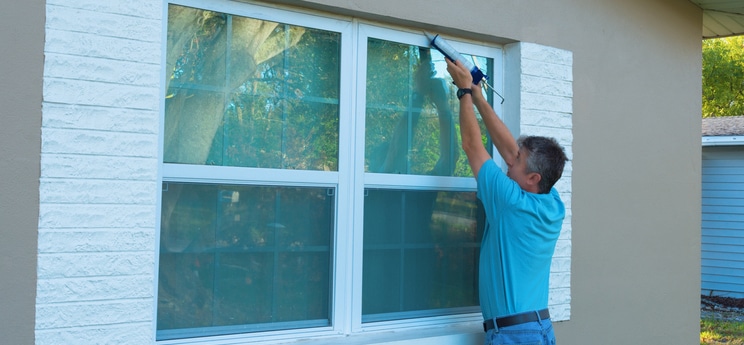10 Energy-Saving Summer Weatherization Tips
Research from the Energy Information Administration (EIA) finds that electricity production ramps up between June and August. That’s not too surprising given that space cooling is the largest energy end-use in homes. It accounts for 15% of total energy use.
For most people, the summer is when the electric meter really starts humming. Forgoing climate control isn’t a safe (or comfortable) option so the next best thing is to improve energy efficiency. Keep energy bills from getting out of control this summer by weatherizing around the home.

Start With a Home Energy Audit
The first step to weatherizing your home during the summer is to know where you’re wasting energy. A home energy audit is an overall assessment of how electricity is being used and where improvements can be made. You can use a professional auditor or conduct a DIY home energy audit.
Seal Around the Doors and Windows
The first place to weatherize is around windows and doors. If there are air leaks up to 30% of the energy you use could be wasted. The leaks can easily be plugged up with weatherstripping and silicone caulk. If there’s worn out weatherstripping remove it first before installing new material.
You may also want to replace the door sweeps and tighten the jambs of exterior doors and doors that lead to uninsulated spaces like the garage or basement.
Seal Up Around the Rest of the Home’s Envelope
Once the windows and doors are sealed up airtight, expand to the rest of the home’s envelope. Look for cracks and gaps where the foundation meets the framing, around pipes that exit the home, on the chimney and around exhaust fans and vents.
Seal Between the Attic and Ceiling
One spot many homeowners miss while sealing up their home in the cracks between the attic and ceiling of the living spaces. Attics are notorious for being hot boxes in the summer, and if there are air leaks that hot air can end up in the rooms below. Simply sealing the cracks between the ceiling and attic with caulk will keep the hot air from moving into the home.
Seal Up Leaky Ducts
Ducts that aren’t airtight can waste a lot of energy during the summer and make your home less comfortable. Many homeowners are surprised to find there are gaps, tears, and loose connections that allow cooled air to seep out into the attic and crawl spaces.
Sealing up the leaks can reduce energy waste by as much as 10% and save you hundreds of dollars. Minor repairs in ductwork that are easily accessible can be handled by the homeowner using duct mastic or heat approved tape. However, if there are large holes or problems in voids that are hard to reach consider calling in the pros.
After sealing the ducts you can take an additional weatherization step and add insulation.
Seal Up Switches and Outlets
Finally, prevent cooled air from leaking into the walls and wasting energy by sealing switches and outlets. There’s specialized foam sealer that can be used around receptacles after removing the covers. Sealing up all the switches and outlets in your house could reduce energy waste by as much as 20%.
Add Attic Insulation

During the summer heat can build in the attic to well over 100 degrees. If it isn’t insulated well that hot air will make it warmer in the living spaces and make your HVAC system work harder.
Even if you already have attic insulation, adding another layer can help keep it more temperate, and installing rolls of fiberglass insulation is an easy DIY job. Just lay the insulation on top of what’s already there. You can improve efficiency by adding a radiant barrier over the insulation.
Add an Attic Vent
If you don’t already have an attic vent it may be time to add one. Attic fan vents help remove hot air that builds up in the space while pulling in cooler air from outside. Ventilation also removes moisture and helps protect roof shingles.
Just make sure the attic is well insulated and soffit vents aren’t blocked before using attic fan ventilation. If soffit vents are blocked it can actually cause the vents to draw in cooler air from inside the home and make your air conditioner work harder.
Freshen up the Air Filters
Simply replacing or cleaning your air filters can make a significant difference in the efficiency of your HVAC system that’s running 24/7. During the summer it’s best to freshen up air filters once a month.
Replace Broken Windows
Windows are one place in the home where energy waste can be a serious problem. Some older windows weren’t built to be energy efficient, but even newer windows can be a problem if the glass is broken.
Any time a window is broken it should be replaced. It’s not only an energy efficiency issue, it’s a safety hazard. It’s a bit of an investment, but a new window prevents air from leaking out of cracks and wasting money. Make sure to choose a window with Low-E coating and double or triple-pane glass for maximum efficiency.
Do you use more energy during the summer months? Spark Energy provides customers with detailed bills that help explain electricity use and ways to conserve energy. Find available energy plans in your area!



